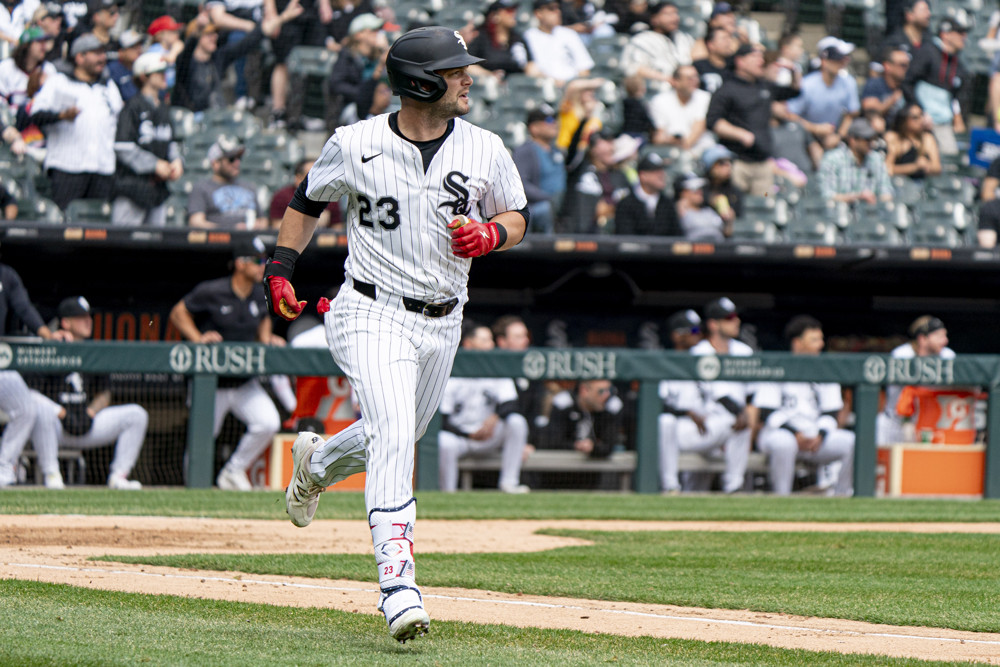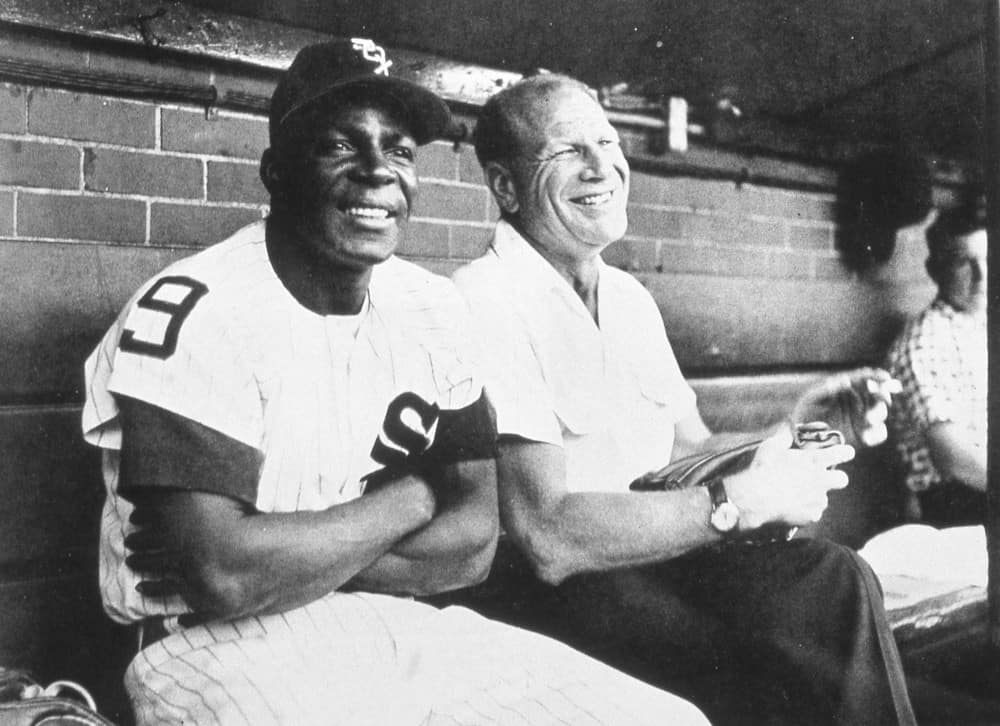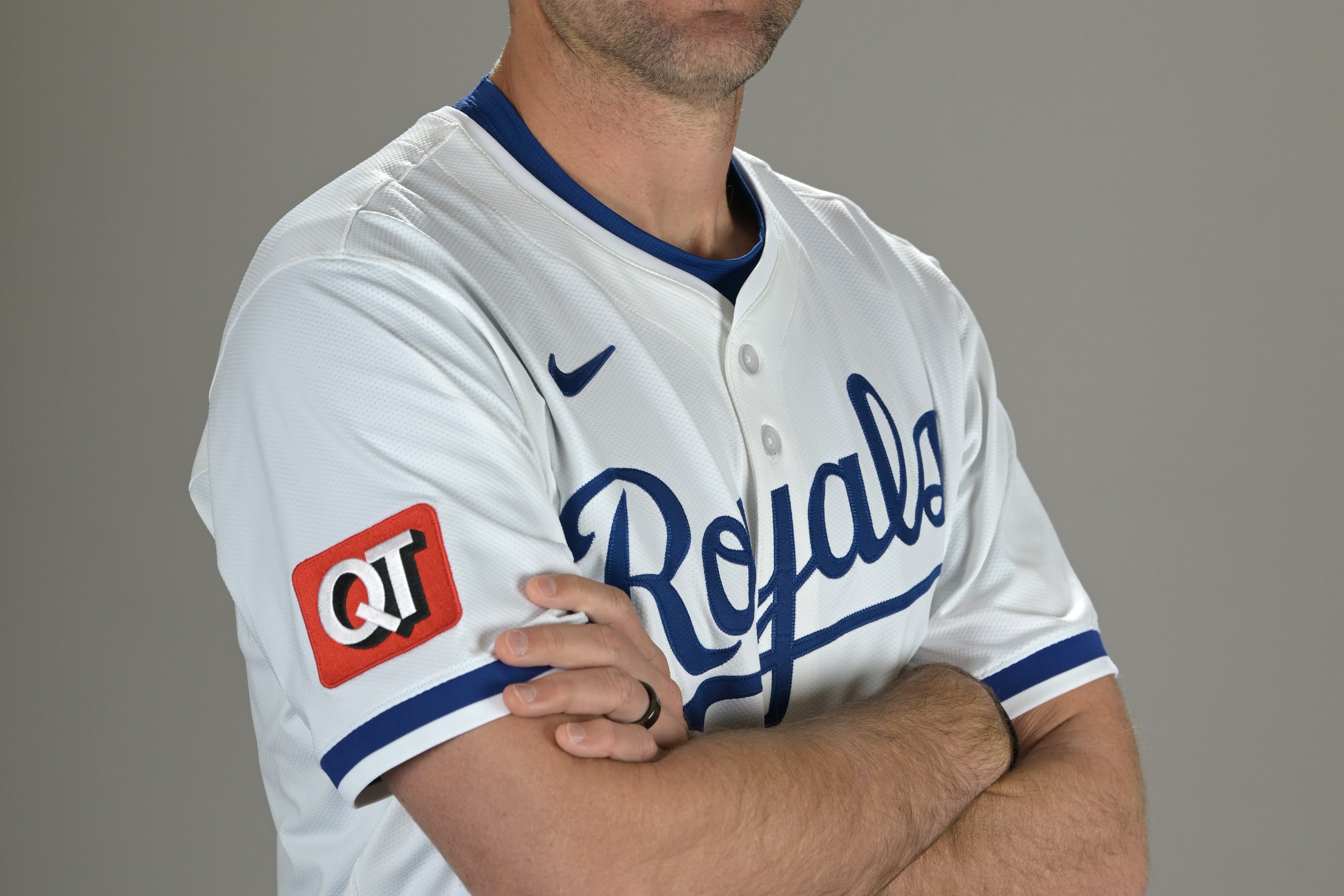For someone who arrived in Chicago with the hopes that he could take advantage of generous home accommodations for left-handed power, Andrew Benintendi had a note for those would view him pulling 97 mph on the outer half as a clear sign that all is fixed forever.
"Any elevated pitch is easier to pull than a down and away pitch, that's more of a rollover," Benintendi said. "But yeah if I can get the head out on 97 mph and stay behind it, I think I should be able to stay on the offspeed stuff."
As Benintendi has found a groove with a shaved-down version of the loading action of his swing since the second half of last season, swapping out a bigger leg kick for a muted toe tap, the real benefit of the extra split-second has been giving him more time to adjust to the influx of super-charged secondary pitches across the game. In other words, Benintendi could time up 97 mph at the letters with a leg kick if that was all he had to worry about. It's the task of identifying and still capitalizing on 92 mph sliders and 90 mph changeups that requires more margin for error.
As it so happened, career home run No. 100 came on a more traditional 83 mph changeup that stayed too middle to be a real test of Benintendi's cautionary note, but he held back on it all the same.
"The toe tap almost allows me to hover my front foot going forward, read the pitch and then get [my foot] down, where as with the leg kick you have a longer way to go," Benintendi said. "I'd have to rush my foot down with a leg kick or ride it out and drift forward."
While the first two homers Benintendi hit last year were memorably clustered, he didn't connect on them until April 27, and earlier showings of the pull pop that made Benintendi a weapon late last season are the reward for the last-minute cram sessions of B-game at-bats he went through to be ready for opening day. At least until July, the continued Benintenaissance can be enjoyed both by fans noting that their regular viewings of White Sox baseball are meaningfully more pleasant than last year, and those who dutifully only value the franchise's accumulation of long-term assets.
⚙️⚙️⚙️
Miguel Vargas lined out on a José Soriano sinker on Saturday at an 107.3 mph; the hardest he's hit a ball in a major league game since last June in Coors, when he was still a member of the Dodgers. Whether that juice is still in ample supply at the end of the six-month marathon is the bigger test, but the work Vargas put in over the winter to add bulk and subtract the extraneous initial movement from his bat path is at least showing signs of the intended results out of the gate.
As is some of the weighted bat work from the spring, even if some will only concede it as a teensy piece of why he looks better.
"The guys are coming in much more physical and Vargas is a guy who comes to mind quickly," said director of hitting Ryan Fuller. "Is bat speed great? Yes, it absolutely is. But we want great bat speed with great direction. So we have weighted bats for them that the guys enjoy using. It's also variability. Each bat is going to test your body to accomplish the task of squaring up a baseball in different ways. The more robust we are, the more variable we are in our movements, the more we'll be able to cover in the game and messy situations."
Fuller also mentioned Vargas as an Trajekt enthusiast for working on plate discipline -- as a former Dodger, he was already familiar -- and his .231/.375/.308 line through four games looks like something he could have produced with his plus plate discipline and below-average power last year. But his confidence at the plate and interpretation of his role as a leadoff man have taken him to a new level of batter's box stoicism early on.
"I take pride in being a leadoff hitter," Vargas said postgame Monday. "I'm just trying to make the pitcher throw strikes and have the guys behind me be in a good spot. I try to swing at strikes."
Five strikeouts in 16 plate appearances would normally be discouraging, but Vargas has been so dedicated to working counts that he's walked or struck out in half his trips to the dish, and three of his punchouts have been of the looking variety. Whiff rate, chase rate, any indicators that would actually portend to more strikeouts long-term are down early for Vargas, suggesting things will normalize when the rubber meets the road and he's challenged in the zone more often.
That's when we'll really see if his literal offseason diet of his mother's arroz y frijoles pays off.
⚙️⚙️⚙️
It is far, far too early for the White Sox to start talking too big and bad about their cadre of pound-the-zone, weak-contact, east-west-working starting pitchers. But no earned runs in four games is certainly worth celebrating.
"Have they not given up a run yet?" Andrew Vaughn said. "That's pretty special. They're doing their thing. It's awesome to see."
And it's too early to start talking like "a wide strike zone hates to see a White Sox starting pitcher coming" but if there's one way for their prevalence of east-west oriented starters to pop to an extra degree, it's something like the generous outside corner umpire James Hoye granted against Twins right-handed pitchers. Decidedly bad for Lenyn Sosa, but good for the team overall.
Maybe it was just gamesmanship that the Sox talked more about Martín Pérez's sinker and slow curve at the start of spring, and maybe it was just seeing a weakness and sinking their fangs into it that Pérez and Matt Thaiss started tickling the outside corner with cutters and changeups Monday afternoon.

None of the four pitches outside the zone from this Statcast plot of cutter and changeups called for strikes ended the at-bat. Instead, all three of the cutters were to get Pérez back into the count when he had fallen behind without offering something hittable (hence, zero hits), and drove chases of sinkers later in the plate appearance.
"That was the plan but at the same time, they tell you what they are looking for," Pérez said. "It doesn’t matter how hard you throw. It’s where you are going to throw the ball, how you move the ball and change their balance."






